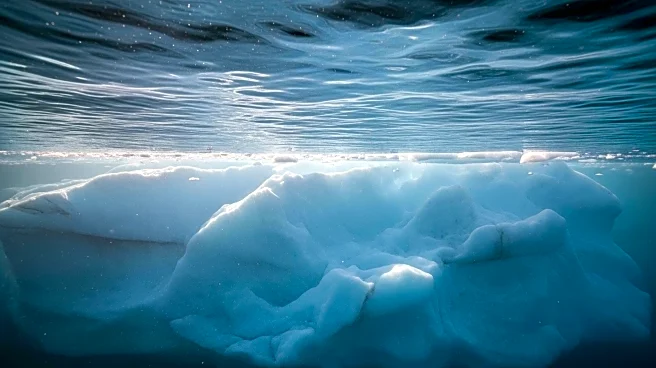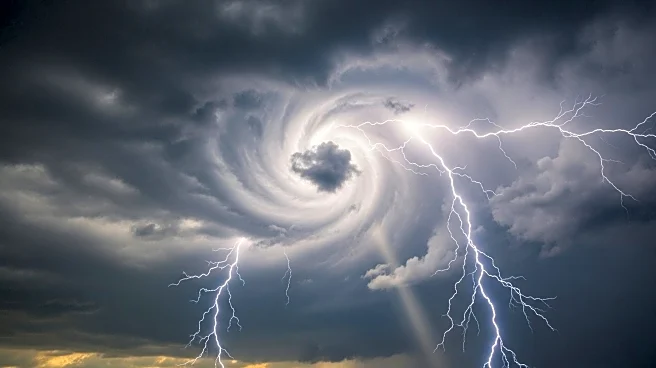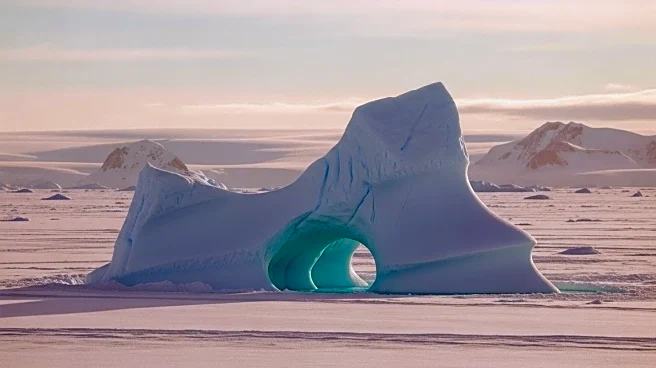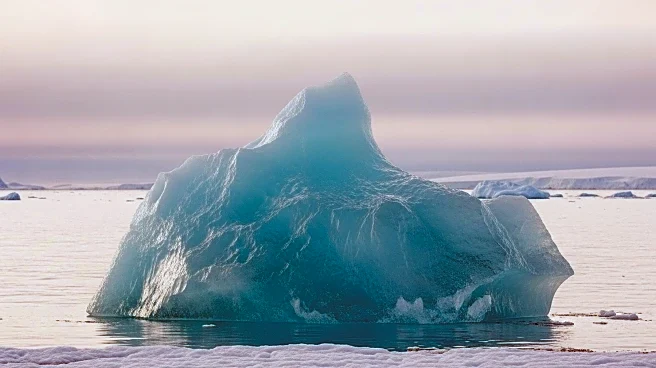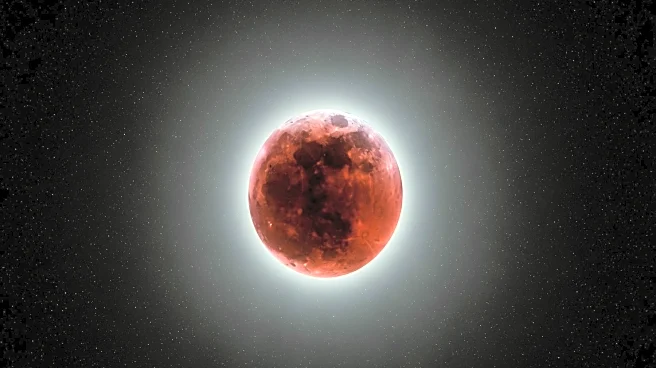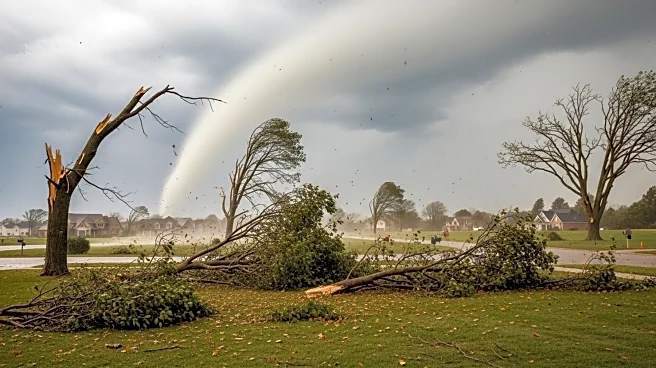What's Happening?
Recent research has revealed that dust plays a significant role in the formation of ice in the atmosphere, potentially altering climate models. A study published in Science analyzed 35 years of satellite data, demonstrating that dust can cause cloud water droplets to freeze at warmer temperatures than previously thought. This finding extends laboratory observations to atmospheric scales, suggesting that dust influences whether cloud tops are liquid or ice. The study focused on the Northern Hemisphere's extratropics, where mixed-phase clouds are prevalent and desert dust is abundant. Researchers found that regions with higher dust levels had more ice-topped clouds, particularly during summer when desert winds are strongest.
Why It's Important?
The discovery has substantial implications for climate modeling, as it highlights the need to account for dust's impact on cloud freezing and precipitation patterns. Ice-topped clouds allow more sunlight to penetrate and trap heat, whereas liquid-topped clouds reflect sunlight and cool the planet. Understanding these dynamics is crucial for predicting climate change effects accurately. The study provides robust evidence of dust aerosols affecting cloud freezing, aligning with laboratory predictions. As climate change may lead to drier surfaces and increased dust aerosols, this research is vital for anticipating future atmospheric conditions and their impact on global climate.
What's Next?
Further research is needed to understand the precise impact of dust on precipitation and climate. Scientists aim to explore the number of liquid droplets and ice crystals in clouds to refine climate models. As climate change progresses, the potential increase in dust aerosols could significantly alter cloud behavior, necessitating ongoing investigation into these processes. Researchers are motivated to continue studying clouds and aerosols to better predict future climate scenarios and their implications for weather patterns and environmental conditions.
Beyond the Headlines
The study raises questions about the long-term effects of increased dust aerosols due to climate change. As Earth's surfaces become drier, the potential rise in dust levels could lead to more frequent cloud freezing, impacting global weather patterns and climate stability. This research underscores the interconnectedness of atmospheric components and the importance of considering all factors in climate modeling. Ethical considerations also arise regarding the responsibility to mitigate dust emissions and their environmental impact.





